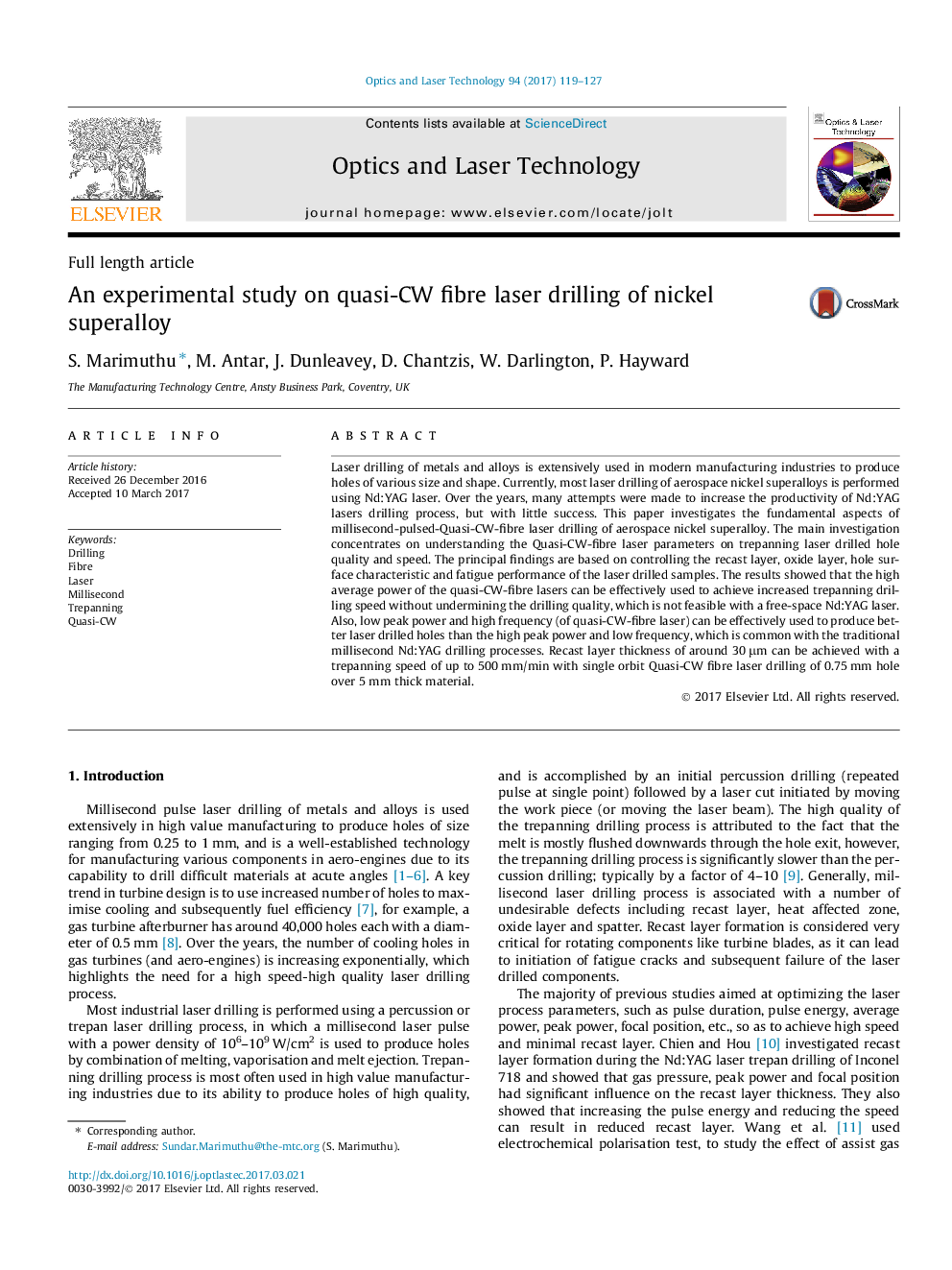| Article ID | Journal | Published Year | Pages | File Type |
|---|---|---|---|---|
| 5007246 | Optics & Laser Technology | 2017 | 9 Pages |
Abstract
Laser drilling of metals and alloys is extensively used in modern manufacturing industries to produce holes of various size and shape. Currently, most laser drilling of aerospace nickel superalloys is performed using Nd:YAG laser. Over the years, many attempts were made to increase the productivity of Nd:YAG lasers drilling process, but with little success. This paper investigates the fundamental aspects of millisecond-pulsed-Quasi-CW-fibre laser drilling of aerospace nickel superalloy. The main investigation concentrates on understanding the Quasi-CW-fibre laser parameters on trepanning laser drilled hole quality and speed. The principal findings are based on controlling the recast layer, oxide layer, hole surface characteristic and fatigue performance of the laser drilled samples. The results showed that the high average power of the quasi-CW-fibre lasers can be effectively used to achieve increased trepanning drilling speed without undermining the drilling quality, which is not feasible with a free-space Nd:YAG laser. Also, low peak power and high frequency (of quasi-CW-fibre laser) can be effectively used to produce better laser drilled holes than the high peak power and low frequency, which is common with the traditional millisecond Nd:YAG drilling processes. Recast layer thickness of around 30 μm can be achieved with a trepanning speed of up to 500 mm/min with single orbit Quasi-CW fibre laser drilling of 0.75 mm hole over 5 mm thick material.
Related Topics
Physical Sciences and Engineering
Engineering
Electrical and Electronic Engineering
Authors
S. Marimuthu, M. Antar, J. Dunleavey, D. Chantzis, W. Darlington, P. Hayward,
